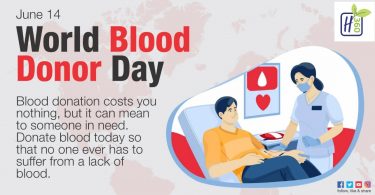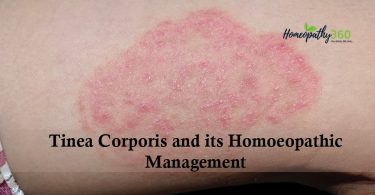Homeopathy, also known as a form of alternative medicine based on the philosophy of “like cures like,” has remained a prevalent choice for patients worldwide. This industry, which has historical roots tracing back to the late 18th century, has seen an upswing in the 21st century, as the global emphasis on health and wellness has increased. This renewed interest has led to the integration of medical devices into the realm of homeopathy, promising innovation and evolution within the sector.
However, as we venture into this intersection of technology and alternative medicine, it becomes increasingly vital to understand the regulatory landscape surrounding these developments. This well-researched piece seeks to illuminate the intricacies of the regulatory frameworks that govern the incorporation of medical devices within the homeopathy industry.
The Regulatory Watchdogs: Ensuring Safety and Efficacy
In the realm of healthcare and medicine, various bodies oversee the introduction and use of medical devices. In the US, the FDA is the primary authority governing the safety, effectiveness, and quality of medical devices. This regulation includes devices used in the homeopathic industry, such as diagnostic tools or those used in remedy preparation and administration. Thus, every operator of this niche must have a Medical Devices Active License.
Across the Atlantic, in the European Union, the European Medicines Agency (EMA) and other national competent authorities play similar roles. These organizations, while operating under distinct rules and regulations, share a common goal of ensuring public health by requiring medical devices to be safe and effective.
Classification and Categorization of Medical Devices
Medical devices in homeopathy span a wide range, from simple tools used to prepare homeopathic remedies to complex, sophisticated devices that facilitate diagnosis and treatment. The FDA, EMA, and other regulatory bodies usually categorize devices according to the potential risk they pose to patients. This risk classification, in turn, determines the level of scrutiny a device must undergo.
The FDA separates medical devices into three classes, from I to III, depending on the degree of risk they pose. Class I devices, which present the lowest potential risk, are subject to general controls for safety and effectiveness. Class II devices, associated with a higher risk, necessitate specific controls in addition to the general ones. Class III devices, which pose the highest risk, must usually undergo a premarket approval process, a rigorous examination to verify their safety and efficacy.
Market Approval for Homeopathic Medical Devices
Before a homeopathic medical device can reach the market, it must navigate a pathway to regulatory compliance. In the U.S., the two main avenues are 510(k) clearance, applicable for Class I and II devices, and Premarket Approval (PMA), required for Class III devices. The former involves establishing that the device is as secured and efficient as a device already on the market, while the latter necessitates a stringent review of the device’s safety and efficacy.
In the European Union, medical devices must comply with the requirements outlined in the Medical Device Regulation (MDR) 2017/745. This regulation, fully implemented in 2021, stipulates the need for devices to meet safety and performance requirements, maintain a risk management system, and undergo a conformity assessment.
Navigating Future Challenges and Opportunities
Despite the intricacies involved, regulatory compliance presents numerous opportunities. By meeting the regulatory requirements, manufacturers of homeopathic medical devices can demonstrate the safety and effectiveness of their products, gaining the trust of practitioners and patients alike.
However, this landscape isn’t devoid of challenges. Regulatory bodies worldwide are still grappling with how to accommodate new technologies within existing frameworks. Furthermore, these regulations can vary significantly across countries, complicating efforts to market homeopathic medical devices globally. In addition, establishing the effectiveness of homeopathic devices can be particularly challenging due to ongoing debates about the scientific validity of homeopathy itself.
Regulatory Nuances: Distinguishing Between Medical Devices and Homeopathic Medicines
A crucial aspect to consider when discussing the regulatory landscape of medical devices in the homeopathy industry is the distinction between medical devices and homeopathic medicines. While they may seem to overlap, these two categories are distinctly regulated. Homeopathic medicines are typically regulated as drugs, while medical devices follow a different pathway for approval.
Homeopathic medicines, regulated by guidelines outlined in the Homeopathic Pharmacopoeia of the United States (HPUS), must meet specific standards of preparation, dilution, and labeling. On the other hand, medical devices used in homeopathy follow the same approval pathway as any other medical device, as outlined previously.
Understanding this distinction is crucial for companies involved in the development and marketing of these products.
Evolution of Regulations
The regulatory landscape is not static and evolves in response to advancements in technology, shifts in public health priorities, and feedback from stakeholders. It’s important for businesses in the homeopathy industry to stay abreast of these changes.
For instance, in recent years, the FDA has proposed a new, risk-based approach to the regulation of homeopathic products, including medical devices. This approach aims to prioritize enforcement and regulatory actions for products that have the greatest potential to cause harm. Understanding and adapting to such changes is crucial for maintaining compliance and ensuring the successful market introduction of homeopathic medical devices.
The Importance of Post-Market Surveillance
Once a medical device has received approval and entered the market, regulatory obligations do not cease. Post-market surveillance, including reporting adverse events and device malfunctions, is an integral part of the regulatory landscape. It allows regulatory bodies to monitor the ongoing safety and effectiveness of devices and take action if any issues arise.
For homeopathic medical devices, effective post-market surveillance can help build a robust evidence base for their safety and efficacy, contributing to greater acceptance and trust among healthcare professionals and the public.
Final Thoughts
In conclusion, the regulation of medical devices in the homeopathy industry is a complex but crucial aspect of ensuring patient safety and treatment efficacy. From understanding risk-based classifications to navigating approval pathways, to staying updated with evolving regulations and performing diligent post-market surveillance, compliance with these regulations is a multi-faceted process.
Embracing the regulatory landscape, despite its complexities, can open doors to greater credibility and acceptance for homeopathy. After all, it’s through these rigorous standards and regulations that homeopathic medical devices can prove their worth in the broader healthcare landscape, paving the way for a future where technology and tradition harmoniously merge to provide safe and effective patient care.





